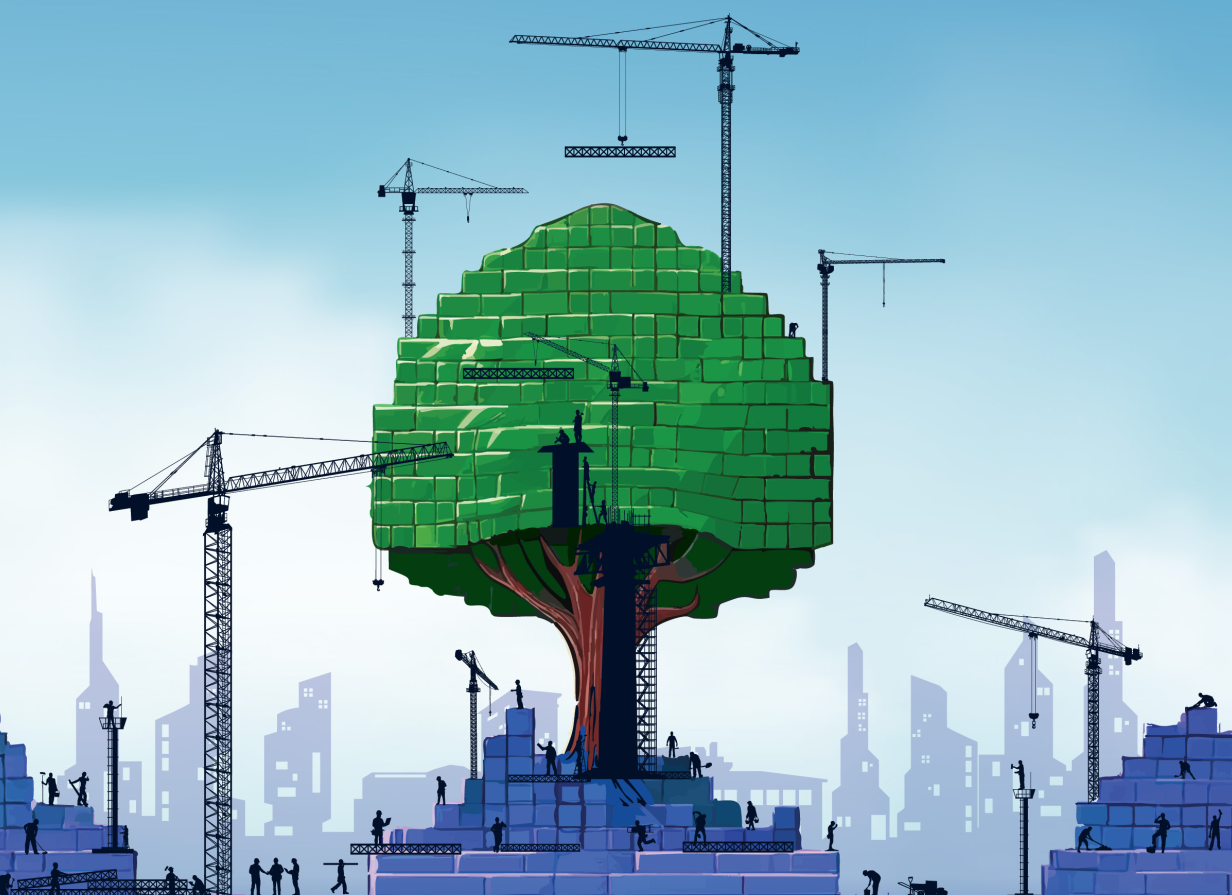Global Status Report for Buildings and Construction 2024/25 – Summary
The 2024/2025 Global Status Report for Buildings and Construction is a comprehensive assessment of the sector’s progress toward climate goals. Developed collaboratively by experts from UNEP, UCL, BPIE, and other institutions, the report highlights both the urgency and the opportunity within the buildings and construction sector to significantly reduce global greenhouse gas emissions. The core message is optimistic but clear: solutions exist, and scaling them rapidly is essential.
State of Emissions and Energy Use in Buildings
The buildings and construction sector remains one of the largest contributors to global CO₂ emissions, responsible for approximately 37% of energy-related CO₂ emissions. The report emphasizes that while energy intensity (CO₂ emissions per square meter) has marginally declined, overall emissions from the sector have increased due to expanding floor area, population growth, and increased use of energy-consuming appliances.
In 2023, both direct and indirect emissions from buildings reached a record high. Key drivers include rising energy demand for cooling and heating, slow uptake of energy efficiency improvements, and continued dependence on fossil fuels, particularly in residential heating systems.
Progress and Gaps in Policy and Regulation
While 158 countries now have at least one policy instrument promoting energy efficiency in buildings, only 26 countries have mandatory building energy codes covering new and existing buildings. The enforcement and compliance mechanisms remain weak in many regions. Furthermore, renovation rates globally remain at or below 1% per year—far below the 2.5–3% needed to achieve net-zero emissions by 2050.
There has been a notable increase in national and subnational climate commitments post-COP28. However, many lack specificity and clear implementation pathways related to buildings. The report calls for stronger integration of buildings into Nationally Determined Contributions (NDCs) and climate adaptation strategies.
Technology and Innovation
Innovative solutions in building materials, digitalization, and design practices are gaining ground. Mass timber, low-carbon concrete, and circular construction principles are among the technologies showing promise. However, their adoption remains slow, often constrained by regulation, cost, and industry inertia.
Digital tools such as Building Information Modelling (BIM) and digital twins can optimize building performance throughout the lifecycle. These tools are underutilized, particularly in emerging economies where digital infrastructure is lacking.
The report also underscores the critical role of energy-efficient appliances and building automation in managing peak loads and reducing consumption. Smart thermostats, demand response technologies, and improved data transparency can help balance energy use dynamically.
Financing and Investment Trends
Investments in building decarbonization have increased modestly, particularly in energy efficiency retrofits and renewables for residential and commercial buildings. However, this remains insufficient relative to the financing needs for global building stock transformation.
Public investment is particularly crucial in the Global South, where access to capital and low-cost financing for green buildings is limited. Blended finance models, green bonds, and public-private partnerships (PPPs) are highlighted as promising tools to close the financing gap.
Regional Trends and Inequities
There are stark differences between regions in emissions intensity, policy maturity, and renovation activity:
- Europe and North America are leading in regulatory coverage and retrofit programs but face challenges in legacy infrastructure and social equity.
- Asia, especially China and India, shows rapid construction growth and urbanization. However, energy performance standards often lag.
- Africa and parts of Latin America experience the lowest emissions per capita but face acute vulnerabilities to climate change and have the least access to clean energy for buildings.
These disparities point to a dual challenge: decarbonizing developed countries’ vast existing building stocks while enabling climate-resilient growth in emerging regions.
Material Use and Embodied Carbon
A significant portion of emissions in buildings arises not from energy use but from embodied carbon—emissions from materials and construction processes. The report stresses the importance of circular economy strategies: reuse, recycling, and substitution of high-carbon materials like cement and steel.
Material passports, lifecycle carbon accounting, and extended producer responsibility are presented as tools to tackle embodied emissions, although adoption remains in the early stages.
Urban Planning and Resilience
Climate adaptation is becoming more critical as urban areas face increased heatwaves, flooding, and other climate risks. The report advocates for nature-based solutions (e.g., green roofs, urban forests) and passive design principles that reduce reliance on mechanical cooling and heating.
Cities play a central role in driving innovation and action. Municipal governments are often more nimble and ambitious in implementing green building codes, low-emission zones, and retrofit incentives than national governments.
Key Recommendations
- Accelerate Renovation Rates: Scale up deep energy retrofits, particularly in Europe, North America, and older urban centers, with policies that ensure affordability and accessibility.
- Strengthen Policy and Regulation: Move toward universal adoption of mandatory building energy codes, and integrate buildings more explicitly in NDCs and climate financing frameworks.
- Decarbonize Heating and Cooling: Replace fossil-fuel-based heating with electrified systems such as heat pumps, supported by low-carbon electricity.
- Finance Transformation: Expand public and private investments, especially in the Global South, leveraging concessional finance, technical assistance, and capacity building.
- Advance Material Innovation: Support low-carbon building materials, embodied carbon standards, and circular construction models.
- Leverage Digital and Data: Invest in data infrastructure, digital twins, and automated control systems to optimize building operations and monitor emissions.
- Promote Social Equity: Ensure green building transitions do not exacerbate housing inequality. Programs must address energy poverty, housing affordability, and local employment.
- Empower Cities and Local Actors: Equip municipalities with funding, tools, and authority to implement green infrastructure and sustainable urban design.
Conclusion
The 2024/2025 Global Status Report paints a clear picture: the building and construction sector is pivotal in the race to net-zero, and solutions already exist. What remains is the collective will—governments, industries, and civil society must act decisively to scale these solutions. Urgent, systemic change is needed to decarbonize the sector while ensuring inclusive, resilient, and livable environments for all.



